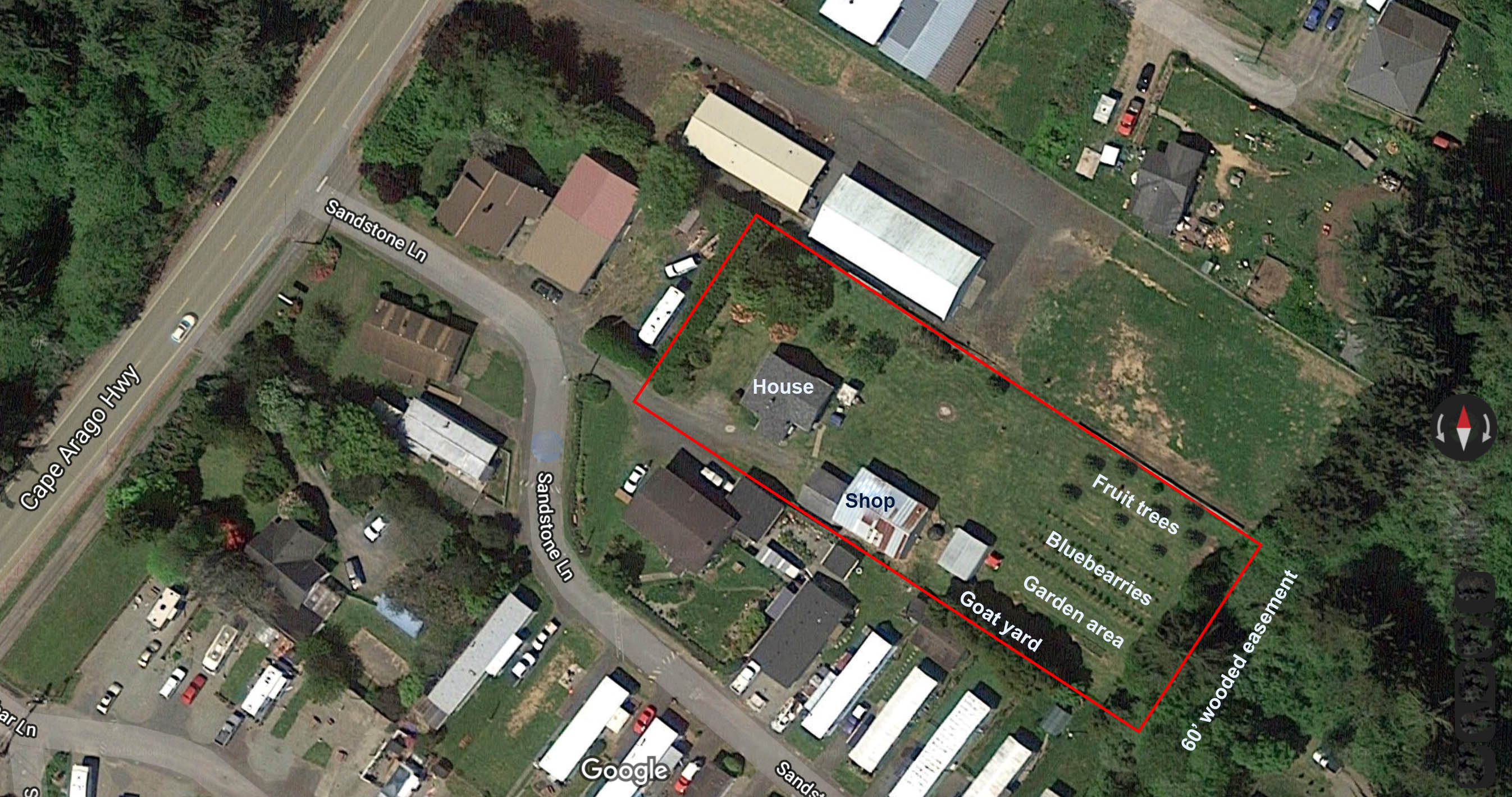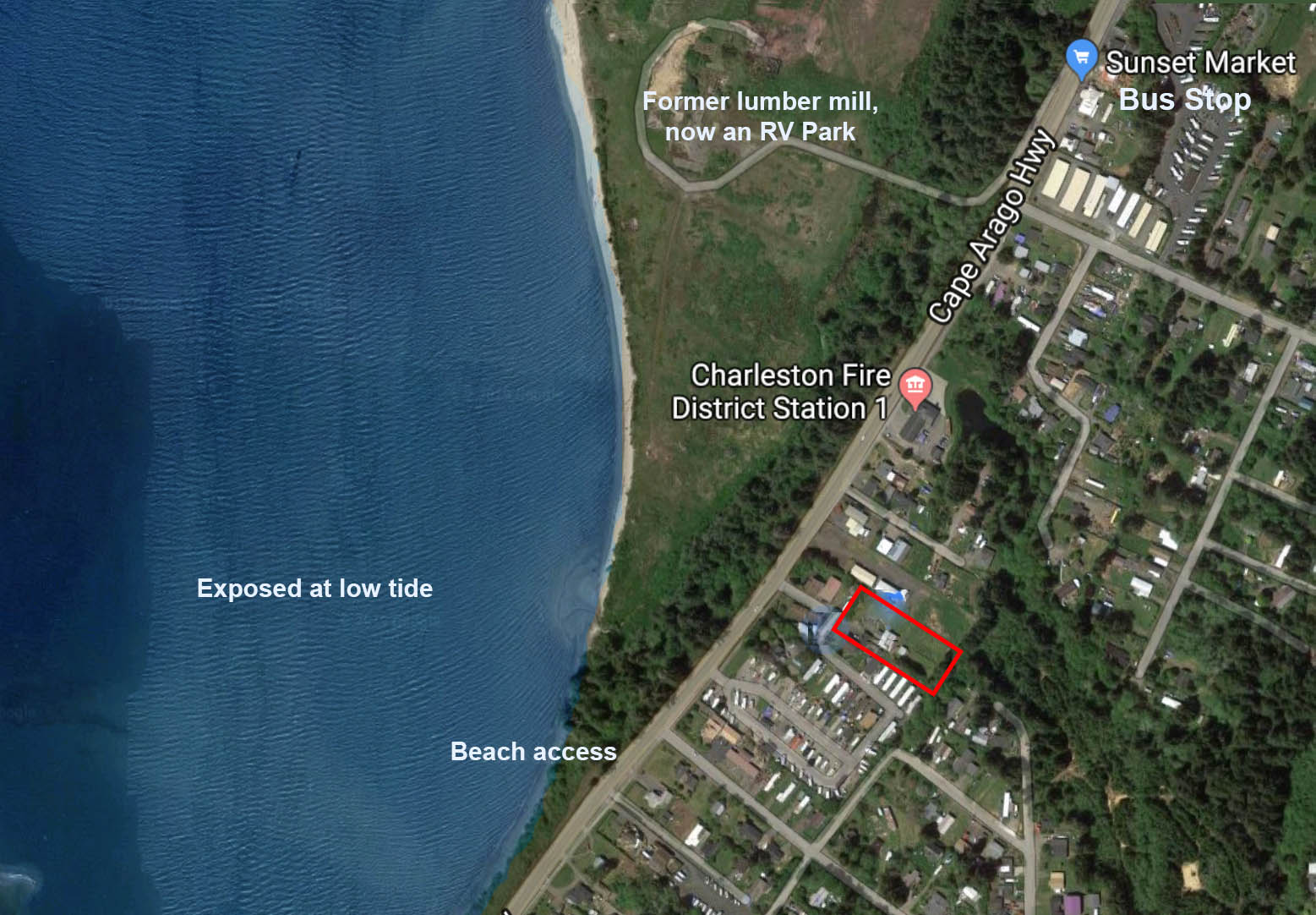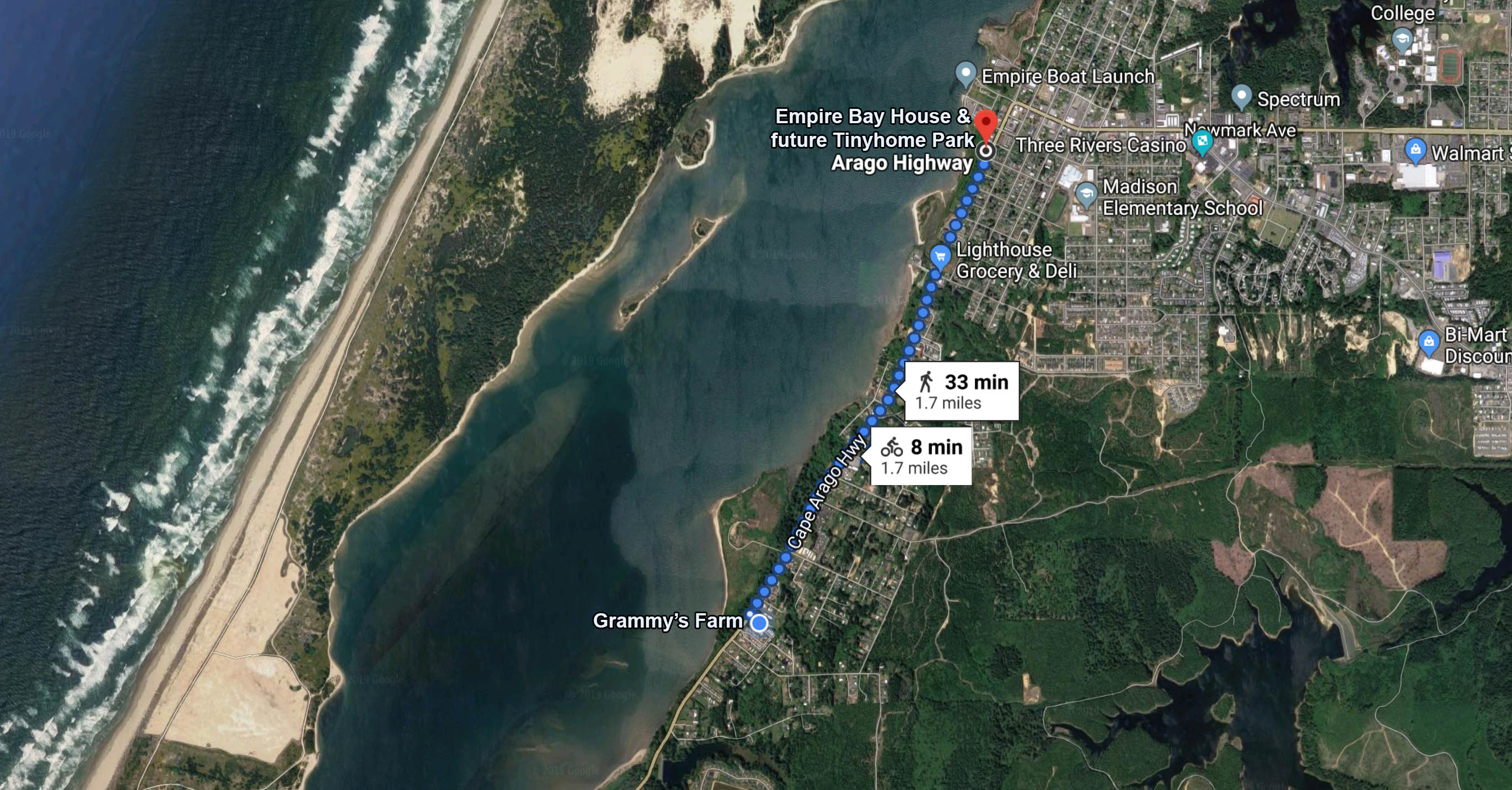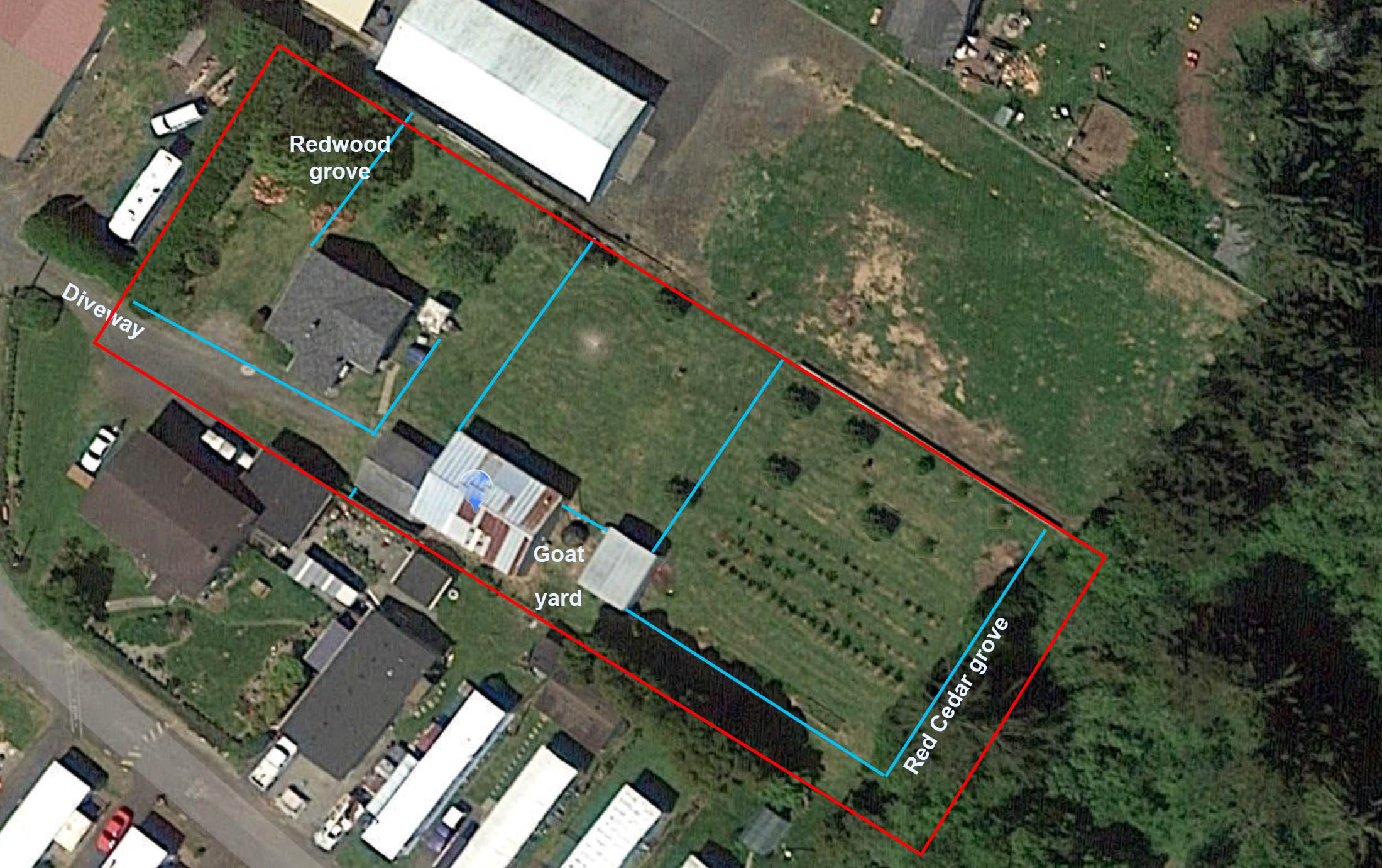
MONDAY, NOV 4, 2019: NOTE TO FILE

Transition House
Because enough is enough
Eric Lee, A-SOCIATED PRESS
TOPICS: ENOUGH IS ENOUGH, FROM THE WIRES, TRANSITION NOW
Abstract: If humans need to transition, some can do so one household at a time and the information collected could be shared when others realize the need to transition to a lower-power society. Ideas were developed for a Tucson, AZ transition house, but we moved on.
COOS BAY (A-P) — One way to envision a sustainable city (or world) is to imagine a sustainable household, then imagine more than one.
Imagining a sustainable household, one dependent on no non-sustainable imports, is, however, merely a thing of the mind. Having a vision is a starting point, but of more interest would be creating such a household and living in it. Industrial society will descend from its unsustainable level of consumption of environmental resources. A managed prosperous way down, a society of enough is alternative to chaotic collapse as usual. If Earth's surface were divided into 20,000 to 25,000 watershed management units of which humans could claim 20%, then the transition could be reckoned from the founding of the first watershed management unit, but prior to that, one household could transition.
Transition House is an experimental facility to test how average people can "transition" to a low-power "life of enough" that is alternative to the current obligatory high-power, high-consumption life in industrial society. Can those habituated to excess from infancy...can products of the fossil-fueled consumer society transition (descend) to a prosperous life of enough? Transition House is to be a laboratory for finding out.
Inquiring minds want to know, both those living in the house and those wanting to know what issues the affluent may have transitioning to a lower consumption way of life. Specifically, what level of energy usage is needed to live a prosperous life of enough that meets actual needs as distinct from manufactured wants that decades of advertising has convinced people are needs?
The Farm

A small (big enough) two bedroom, two bath 966 sq. ft. house, stick built in 1948 in Empire part Coos Bay on commercial property (100 x 338 ft, 0.88 acre) with shop (SolTech Designs). The property is "Grammy's Farm" that includes the transitional urban micro-farmhouse, with areas for humans, plants (greenhouse, planters, trellis, garden) and small stock (rabbits, Guinea pigs, chickens, ducks, Nigerian dwarf milk goats) as permitted on commercially zoned property. A city bus stop is about 500 meters away (0.3 miles) at Sunset Market providing access to the big city for those without a car that stops at the neighborhood market.
Moving out, there is a trail down to the beach where the dogs and some people like to walk.

The house is furnished (bring your own clothes) and is conventional grid-tie with sewer, water, electric service, as much hydro generated electric as you want to pay for. It has wood pellet stove in the living room with the usual washer/dryer, refrigerator, electric stove, microwave and other electric appliances—the putative essentials.
Alternatives will also be available, such as solar and wood cooking. In the future, an ability to live off-grid in the city may be adaptive.
The big overview of area, showing the Bay House/future Empire Tinyhome Park. On a quite day, you can hear the surf's tormented roar, and it is a 20 minute kayak paddle to go to the North Spit. Over a hundred harbor seals haul out on the other side.

Each inhabitant can live the consume-as-usual life of the average Oregonian (transition T = 0%). Some, on the thin edge of the Bell curve, could live an off-grid, fossil-fuel-free life while consuming only what is actually needed and producing what others actually need in exchange for what is consumed (transition T = 100%). Given a full range of options, how far can the average consumer, assuming only some degree of motivation, transition to a sustainable "green" life? Transition House measures use of city water and rain water, electric and solar electric, propane gas, kerosene and biomass wood gas for cooking when solar cooking plans are rained on, and so on. Sustainable consumption will be measured on a T = 0-100 scale, with T=100 meaning full transition. Those who think they can or have "transitioned" can be assessed per agreement to be. Usage of all consumables (with exception of air breathed) can be measured.
A closer view showing added cross fencing.

If it is too hot in the kitchen, a resident could adapt (transition) by sweating more and drinking more water than normal, or use a portable AC, set it on 70 degrees, and not think about the unsustainable consequences. Alternative might be to use an outdoor kitchen as it is almost never 'hot' outside. If too cold inside, possibilities include heating only one room, using only an electric blanket, or just wearing warm enough clothes, which worked for Inuits who lived in a really cold environment. One low-energy option might be to go to the public library or other public space that is heated. Transition House can be used to test and develop appropriate technology and behavior.
Transition House has light switches that turn on conventional LED bulbs to flood an area with light. Flipping a switch, however, is optional. The low-power, off-grid alternative is to use small LED battery powered personal lights that could be pointed where needed (e.g. a headlamp such that where you look, as you move about, the only area lit up is where you are looking for only as long as you are looking). Rechargeable AAA and AA batteries would be recharged when the sun shined. Those having a cell phone could recharge it using solar.
Solar power is alternative, but not on the same scale of the typically gas/coal produced high-power we have been oversold on. If you envision a solar powered future, one is possible, but the question is can everyone on the planet have 30Wh/day of solar power for personal use? Maybe 90Wh/day? Perhaps elites (or elderly or disabled with special needs) might have 300Wh/day for personal use, but 5,000Wh/day (average US consumer) x 7.4 billion (or whatever future population is) is not a reality-based vision of the future. Humans may be able to live a good life of enough while consuming less. This guess needs to be tested.
The EYR (emergy yield ratio--measure of real wealth/"value") of solar is much lower than for fossil fuels. Transitioning means learning that we don't need to live the high-power life, but may hope to have real needs (as opposed to manufactured wants) met by present and future low-power technology. The problem isn't one of providing for all consumer demands (on demand) using "alternative" power as there is no alternative to the amount of fossil fuel energy currently powering the industrial society. The problem is one of changing behavior/expectations to shape human behavior to align with available planetary resources. Current rates of consumption cannot be maintained. This is a fact, not an opinion. Transitioning now is an option.
The vision of the "sustainable" life where everything you want, whenever you may want it, from electric can opener to the Tesla in the air conditioned garage with electric garage door opener that also automatically unplugs the Tesla when opened--all powered by a few solar panels on the roof to eliminate the not so wonderfully green fossil fuel energy, is questionable (as is images of vast solar arrays next to the 20 pumping stations needed to keep CAP water coming....). Elites may always be able to live (and think) in this manner, but commoners may not. Commoners may become more common. By global standards, 99% of Americans are the 1% of elite consumers, 4.6% of human population consuming a quarter of planetary resources. In the US, 0.08% of households live on less than $10/day. In Africa 95% of households consume less than $10 worth of stuff a day. Globally 1.5% of households get by on more than $200/day. Of those 53 million, 58% live in the USA. Those who live like Americans, whether they live the elite life in Africa or Sweden, are the ones who need to transition, and the reality-based vision notes that sustainable means lessable. As E.O. Wilson noted, if humanity wants to (thinks they have to) live like Americans, world population would have to be limited/reduced to maybe 200 million, a 37-fold reduction. Alternative is to reduce consumption. The claim that living a prosperous and productive life on less than Americans have been oversold on needs to be tested and detailed.
By monitoring usage, inhabitants will receive feedback as to how they are doing. Moderation can be reinforced, and doing so would be alternative to incessantly reinforcing excess per business-as-usual. The average Tucsonian uses 130 gallons of water a day. Turning the shower/bath on whenever, adjusting so the water is not too hot, and "luxuriating" in it as long as you want is an option (we have been told we deserve). Learning over time how much water is needed to bathe (intermittent low pressure showering or sponge bath?), putting precious rainfall, nature's gift, in a black bag, hanging in the sun until it is hot enough, hanging the bag next to the CAP shower nozzle, and bathing to satisfaction using a few quarts of water, is an alternative learned behavior. Alternatives will also exist to tossing clothes in the electric washer then electric dryer whenever doing so seems "needed." How far "normal" people can transition has to be determined by testing in an environment that provides alternatives. Welcome to Transition House.
Transition House will be available for others to try. Occupancy may be by the week, month, or year. The facilities are currently not being funded, so something like "rent" will be required, perhaps along the lines of "extended stay" rates, but a sliding scale will be factored in, so all interested should apply as the "high bidder" may not be the chosen one. Lab rats don't pay for there dwellings, so maybe "science" could cover expenses (property taxes, etc.). Having interest and motivation counts. Those wanting a place to live, perhaps just a tent on the shop side, who also want to help with construction/testing, may find a free place in the city to live for the asking. Transition House is not a money making scheme, though at present, some consideration of the money thing is involved. We own the proper, as in it is paid for, and we are limited to a $855/month social security check, which slows the transition down a bit.
Projects needing interest:
- Design/build a Chicken Palace.
- Hook up auto small stock watering system.
- Construct Appalachian style solar food dehydrator.
- Construct solar/outdoor kitchen on patio.
- Construct water filter to purify pond water to potable water.
- Instrument house to better monitor usage of electric and water.

